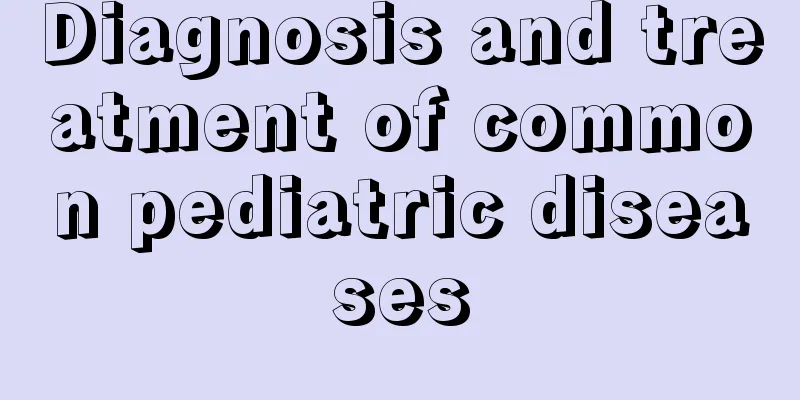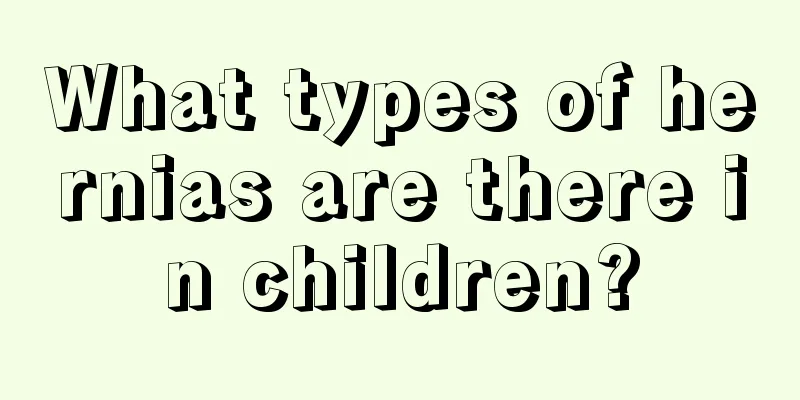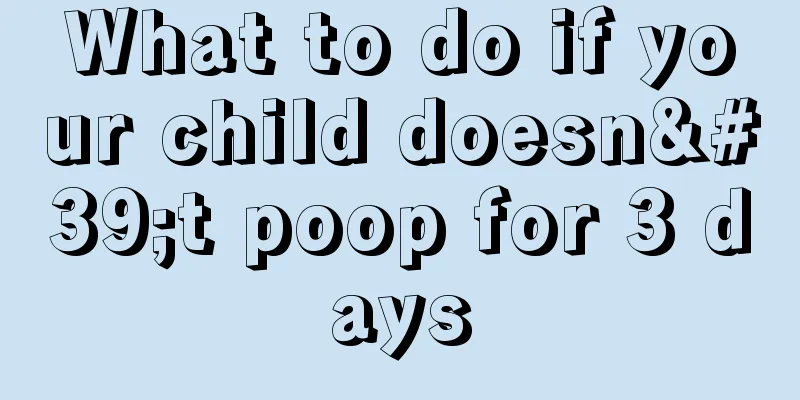Diagnosis and treatment of common pediatric diseases

|
What parents worry about most when taking care of their children is that they will encounter various diseases, especially when they grow to this stage. If they are not careful, some diseases can easily become a major threat to their children's health. So do you know what common pediatric diseases are? How should we diagnose and treat them scientifically and effectively in our lives? Only if we understand these common pediatric diseases can we better help children prevent them, reduce the various adverse effects of the diseases on children, and keep them away from the troubles of diseases. Only in this way can they grow up healthily. Pneumonia (childhood pneumonia) is the most common pediatric disease and the leading cause of death in children. The main clinical symptoms are fever, cough, sputum, shortness of breath, and nasal flaring. In severe cases, patients may open their mouths and raise their shoulders, have difficulty breathing, pale complexion, and blue lips. Colds (acute upper respiratory tract infections) are common diseases in children, accounting for 70% to 80% of pediatric outpatient visits. Since children are born with weak constitutions and are easily affected by wind-evil, they can get sick all year round. The peak incidence is between 6 months and 3 years old, and more than 90% of the pathogens are viruses. Generally, the fever will recur for about 3 days, and it is more obvious at night. Not only is it difficult for children to take medicine, but the infusion also aggravates the pain. Parents suffer both physical and mental torture. Diarrhea (diarrhea disease) Diarrhea disease is a group of diseases caused by multiple pathogens and factors. It is one of the important causes of malnutrition, growth and development disorders and death in children. In my country, the mortality rate of the disease has dropped significantly due to the improvement of children's nutritional status and medical conditions, but its incidence rate is still high, especially in areas with poor conditions. Therefore, diarrhea is one of the key diseases to be prevented and treated in my country. Anorexia in children refers to the symptoms of long-term decreased appetite or lack of appetite in children. It is not an independent disease. Patients generally have few symptoms, that is, they have no appetite for a long time, hate eating, and eat significantly less than normal children of the same age. They have symptoms such as belching, nausea, abdominal distension, irregular bowel movements, or are accompanied by pale complexion, thin body, dry mouth and thirst, but their spirits are still good and their activities are as usual. A small number of children suffer from certain chronic diseases, such as peptic ulcer, chronic hepatitis, tuberculosis, long-term constipation, zinc deficiency, etc. Most of them are caused by bad eating habits, unreasonable eating system, poor eating environment and psychological factors of parents and children. The above is an introduction to the diagnosis and treatment of common pediatric diseases. I hope that after this introduction, everyone can pay more attention to using more healthy and scientific methods to effectively help babies solve the problems of diseases. Better help them maintain good health. |
<<: What to do if your 3-year-old baby is constipated
>>: Symptoms of rhinitis in children
Recommend
Why does my one and a half year old baby toss and turn when sleeping at night?
It is quite common for babies to turn over in the...
Massage for dry cough in children
The incidence of dry cough in children is very hi...
What to do if your child's teeth become loose
Teeth play an indispensable role in our lives. Ev...
What to do if a child has red spots on his face
Children's skin is delicate, and they often h...
What are the symptoms of zinc deficiency in babies?
When it comes to children suffering from zinc def...
What is the child missing if he doesn't have long hair?
After the baby is born, the baby's hair is ve...
What are the specific development standards for babies in April?
When a baby is just born, parents need to pay att...
What are the recipes for 13-month-old babies?
As the child continues to grow, the nutrients he ...
What to do if your child has poor eyesight
Children's eyesight is actually a concern for...
What to do if a child has short genitals
Many parents will find that their children’s geni...
Why does the baby have a fever repeatedly?
It is normal for babies to have repeated fevers. ...
Is phimosis serious in children?
Children’s physical health is the biggest concern...
What are the benefits of children learning Latin dance?
Latin dance is one of the most popular types of d...
Gross motor development delay in children
A child's physical motor skills and intellect...
Why is the 8-year-old girl's underwear yellow?
If an eight-year-old girl's underwear is slig...









